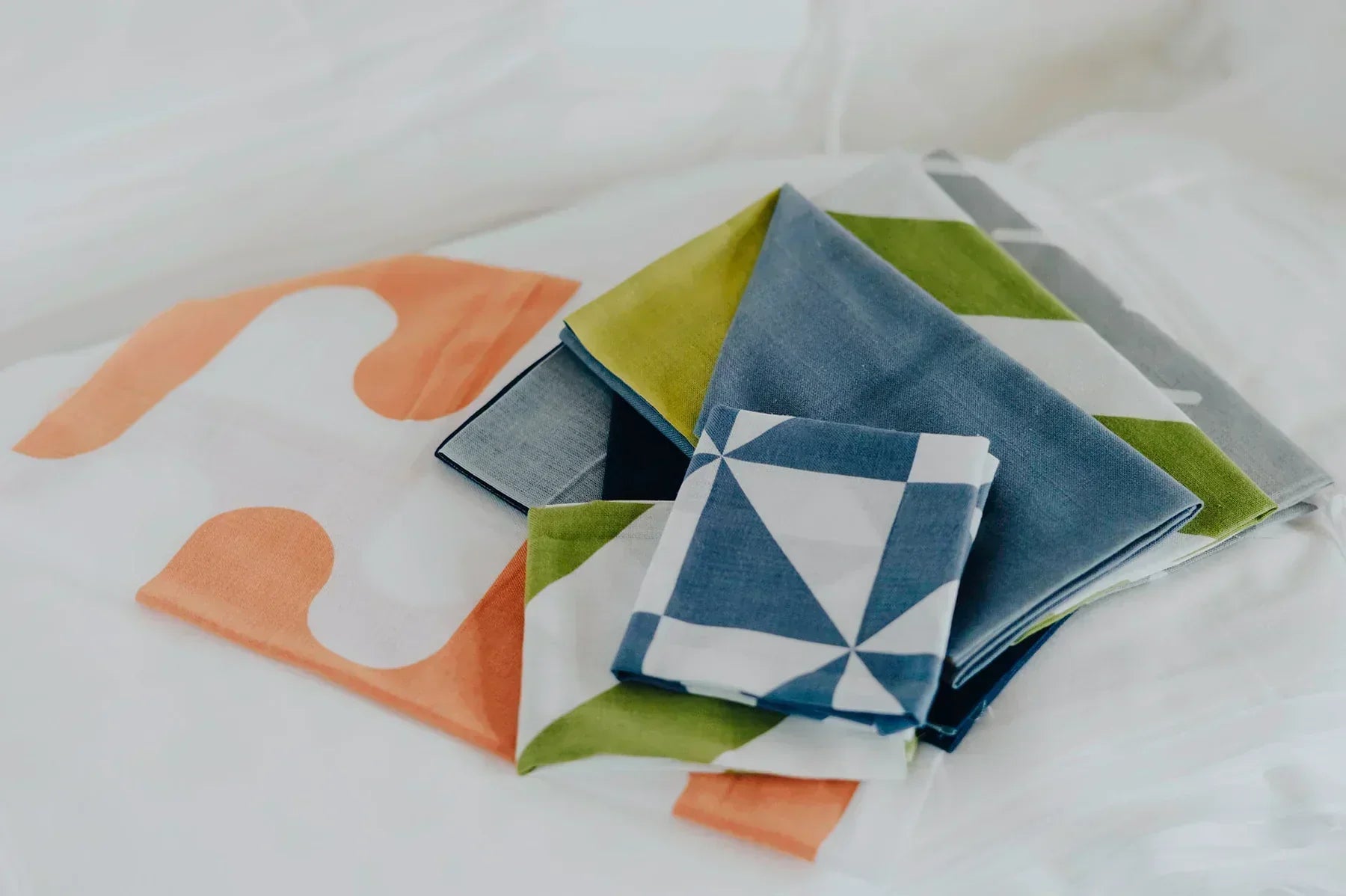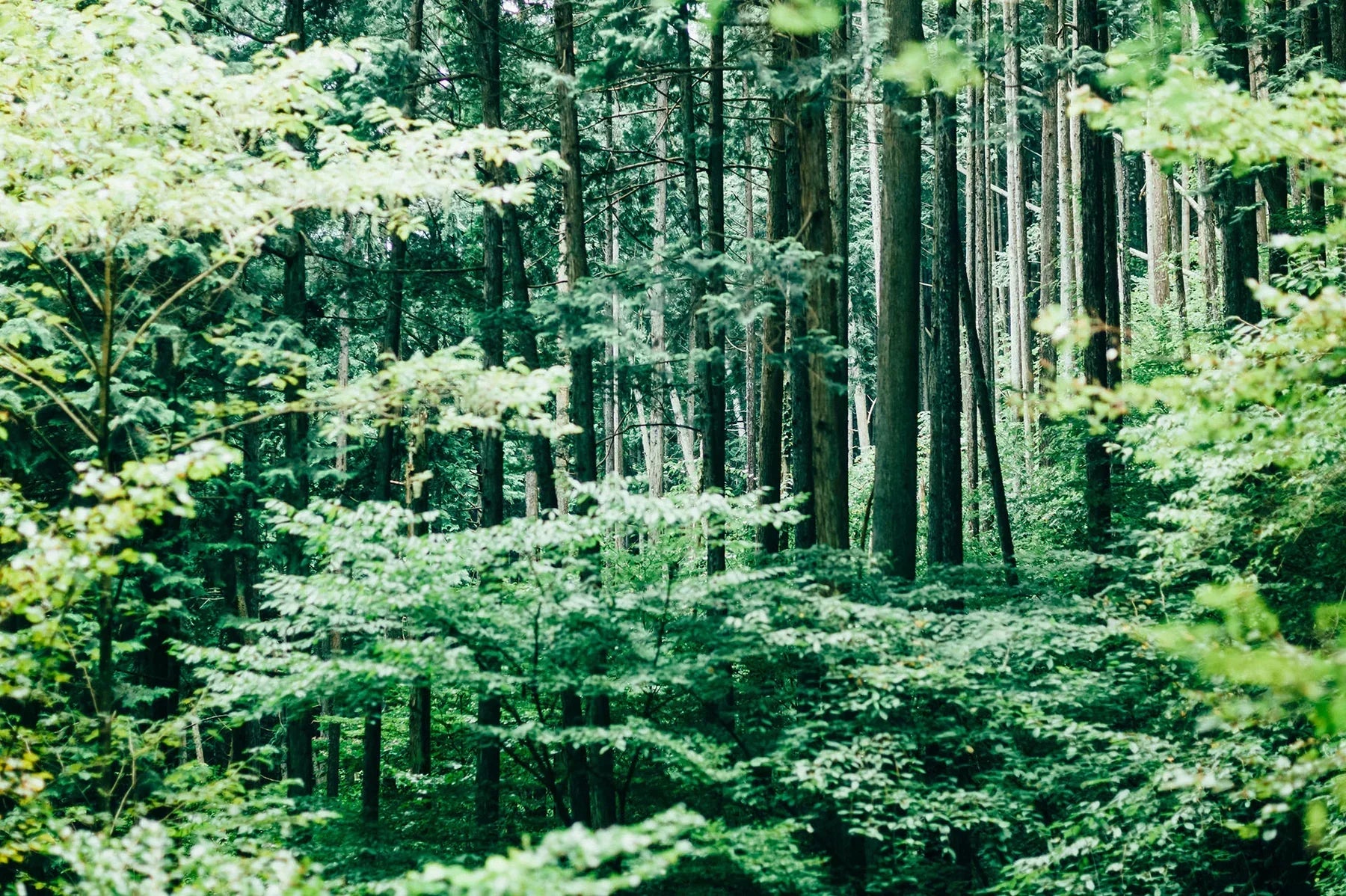
Tenugui dyed using a technique unique to Japan
Sakai City, in Osaka Prefecture, has long flourished as a manufacturing town, home to factories from a wide range of industries. It boasts the highest "value of manufactured goods shipped per capita" among designated cities in Japan and is home to many small and medium-sized enterprises - from gun manufacturing in ancient times to modern production of knives, bicycles, and incense.
Sakai is also known for its thriving cotton industry, which dates back centuries, and is a major producer of tenugui (Japanese hand towels).
Abundant water resources are essential for the production of wazarashi (scouring cotton), the base material for tenugui cloth. As a result, this area along the Ishizu River has flourished as a production centre for tenugui.
Today, bleaching, dyeing, weaving factories, and wholesalers are all located within walking distance.

Did you know that tenugui are being rediscovered and gaining popularity in modern society?
Originally, tenugui were not just used as towels or handkerchiefs - they served many purposes: wrapping items like furoshiki, worn as a sunshade or hood, and even used as bandages.
Thanks to their thin, quick-drying fabric, tenugui are now appreciated not only for everyday use but also for outdoor activities.


This tenugui was made by Takeno Senko, a company with over 70 years of expertise. Originally manufacturing cloth diapers, nightwear, and gauze, the company later specialised in tenugui.
The most notable technique of Takeno Senko is the roll printing method used to dye tenugui on both sides (reversible dyeing). While this technique is not particularly difficult for thick fabrics such as towels, Takeno Senko is the only company in the world capable of dyeing both sides of thin fabrics such as tenugui.
The third-generation president, Hisashi Terada, was concerned about the declining tenugui industry. In order to spread the roll-printing technique, he perfected the double-sided dyeing that was thought to be impossible. Remarkably, success in double-sided dyeing depends not on the machine itself—but on the artisan’s skill.


Roll printing is a dyeing technique that uses a method called "intaglio printing," in which a pattern is engraved into a metal plate, similar to copperplate printing.
The ink is picked up by this roll-shaped mold and dyed onto Japanese bleached fabric, which is why it is called roll printing.
The fabric to be dyed is sandwiched between two rolls, one of which is used to dye the fabric, and the other to press the dye in. This means that it is not enough to simply turn the machine; the pressure needs to be adjusted. If it is too strong, the pattern will be crushed, and if it is too weak, it will fade, so delicate manual adjustment is an important part of this process.
As you can see from this photo, roll printing can reproduce even very fine patterns. When printing in multiple colours, two or three rolls are required. A large number of roll-shaped molds are stored in the factory.


This is a very important process in roll printing. There is a special blade to scrape off the dye neatly, and the craftsmen sharpen the blade by hand, one by one, every day.
If the blade is too sharp, the handle will come out beautifully but the blade will lose its strength, and if it is too dull the opposite is true; this is a job that requires exquisite care.
It takes a long period of training to become a full-fledged craftsman once you have mastered the art of sharpening the blade perfectly. It is said that the shape of the handle is significantly different between a young craftsman and a veteran craftsman, which shows just how delicate this work is.


The finished dyed tenugui is shown below.
In addition to double-sided dyeing, where the front and back are different colours, there are also tenugui with patterns that are dyed through the inside out.
There are some noteworthy points not only about the dyeing technique but also about the base Japanese bleaching.
One of the distinctive features of tenugui is that not only is it made of thin fabric that makes it easy to carry, but the short sides are left unfinished and not sewn.
It was originally used as a substitute for bandages or as a first-aid measure for the thongs of wooden clogs, but by not sewing the edges it has the advantage of drying quickly and being more hygienic.
Taking advantage of the benefits of Japanese bleached fabric, which can be used not only for everyday use such as hand towels, but also when going out or outdoors, we have prepared handkerchief-sized tenugui.
Please try out our tenugui towels, which are made with the utmost care by our artisans.


LATEST STORY

Laundry detergent made using the traditional kettle cooking method
This laundry detergent is made with pure soap, paired with a fabric softener that leaves a natural finish. Our goal was to create a product that strikes the right balance—easy to use, environmental...
Read more
Tenugui dyed using a technique unique to Japan
Sakai City, Osaka Prefecture, is a major production area for tenugui. Takeno Senko is the only company that can make double-sided roll-printed tenugui. Craftsmen carefully dye the textured Japanese...
Read more
Miscellaneous goods made from domestic wood and thinned wood
What image comes to your mind when you hear the word "deforestation"? While often associated with environmental loss, in Japan, sustainable forestry involves the careful use of thinned wood to main...
Read more